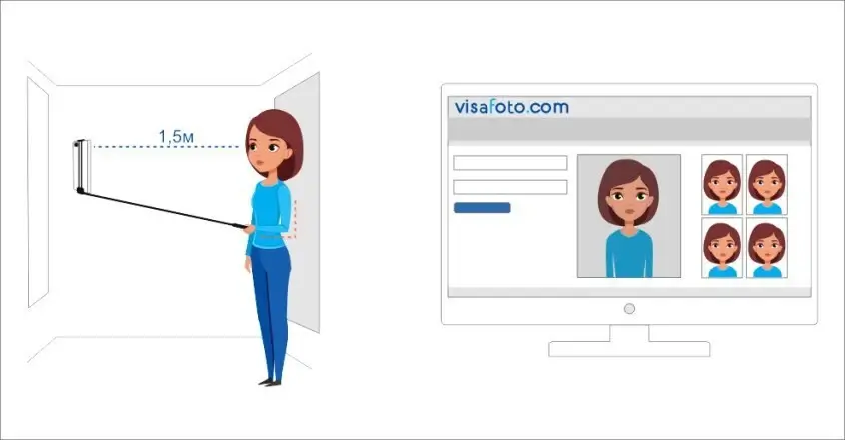China K-visa guide for STEM professionals
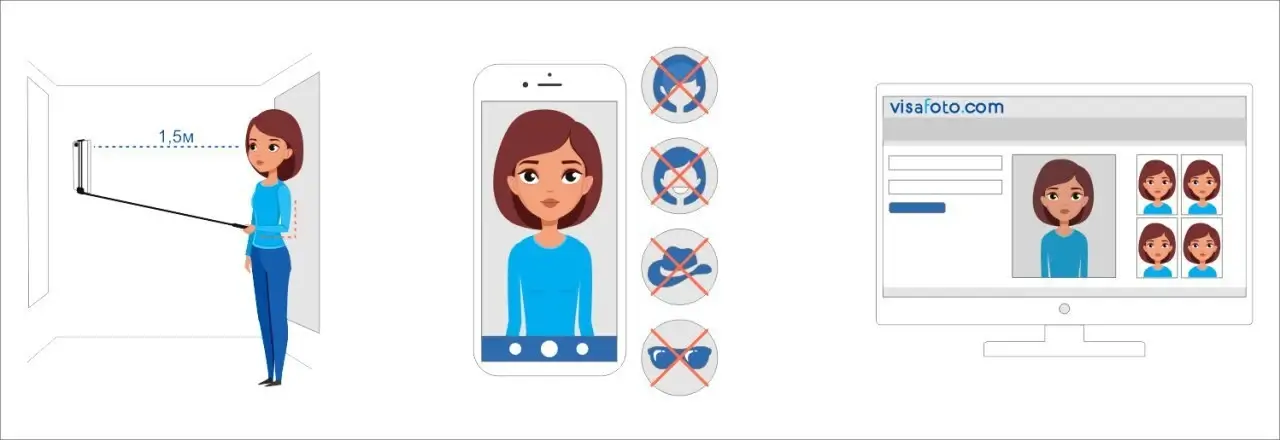
On October 1, 2025, China launched the K visa program, a new initiative aimed at attracting young, talented individuals from around the world who specialize in science, technology, engineering, and mathematics (STEM).
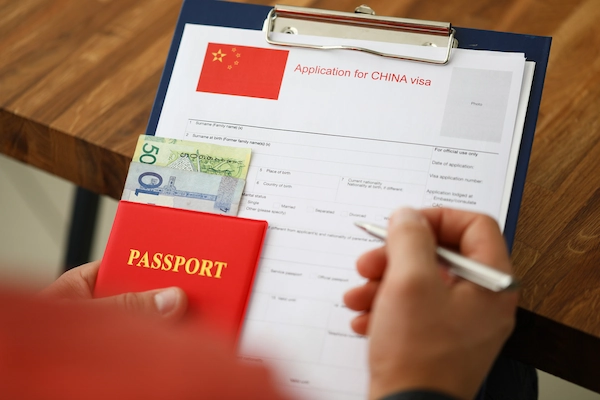
Read this article to learn about the China K visa details, including its benefits and requirements. We'll also share helpful advice on how to streamline your application process with a proper visa photo.
Table of contents
- What is the K visa for China
- China K visa eligibility criteria
- K visa benefits for professionals in China
- China K visa application process
- Documents required to apply for a K visa
- China visa photo requirements
- Online China Visa Photo Editor
- China Visa Photo App
- China K visa fees
- China K visa validity and renewal
- FAQ
What is the K visa for China
The K visa is specifically designed for young foreign professionals in STEM fields. The primary goal of this visa is to enhance China's innovation capabilities and global standing by simplifying the entry process for qualified individuals, eliminating the need for stringent sponsorship.
Key highlights:
- The K visa targets international graduates and young professionals in STEM, typically requiring at least a bachelor's degree from recognized global universities or research centers.
- Unlike the traditional work (Z visa) or specialist (R visa) paths, the K visa does not necessitate employer sponsorship or a confirmed job offer from a Chinese entity during the application phase.
- Holders of the K visa can engage in various activities, including academic exchanges, research, entrepreneurship, cultural events, and business.
- This visa offers a flexible option with potentially longer validity and easier multiple entries compared to standard short-term visas. However, specific aspects like maximum stay duration and renewal procedures have not been fully outlined yet.
China K visa eligibility criteria
To be eligible, candidates need to meet several key China K visa requirements:
- STEM education. Applicants should possess at least a bachelor's degree in a STEM-related field from a recognized university or research institution, whether in China or abroad. Relevant areas of study include Computer Science, Biotechnology, Mechanical Engineering, Data Science, Artificial Intelligence, Renewable Energy, and Manufacturing.
- Young professional status. The China K visa for Science Tech Talent is geared towards young professionals, educators, and researchers. While the specific China K visa age limit hasn't been officially set, it generally targets individuals between 18 and 45 years old.
- Relevant experience. Candidates can be recent graduates actively involved in research, education, or technical work within a STEM field. Those with exceptional achievements in work, research, or education are seen as having a higher chance of qualifying.
K visa benefits for professionals in China
The main K visa China benefits include:
- Independent application. Unlike traditional work visas like the Z visa, the K visa allows professionals and graduates to apply independently without needing a job offer or employer sponsorship, significantly simplifying the entry process.
- Enhanced flexibility. The China K visa for Tech Talent provides multi-entry access, longer validity, and extended stays. It permits qualified professionals to engage in diverse activities such as work, research, entrepreneurship, education, and business, without being tied to a single employer or project.
- Variety of activities. Visa holders can join academic exchange programs, start entrepreneurial ventures, collaborate on research, attend conferences, and participate in cultural, business, and innovative initiatives.
- Ideal for early-career talent. Geared towards younger professionals, including recent STEM graduates, researchers, and educators, the visa offers a chance to establish long-term professional connections in China without needing extensive prior experience.
- Permits employment without job attachment. Unlike the US H-1B visa or China's R visa, the China K visa for young scientific talent allows holders to work and reside in China without being tied to a specific job offer.
China K visa application process
While the application process is largely digital, you will need to present original documents in person, and biometrics may be required (though fingerprinting isn't generally necessary at this time). Here's a step-by-step guide:
- Create an account on the China Online Visa Application (COVA) website.
- Complete the online K visa application form.
- Upload all necessary documents.
- The consulate will initially review your documents online. If additional information or corrections are needed, you'll be prompted to upload these to the platform.
- Once your online review shows the status "Passport to be Submitted", you or a representative must take your original passport and the printed barcode confirmation from the system in person to the designated consulate or visa center - usually without needing an appointment.
- Collect your visa and passport in person from the consulate or center once you receive notification of approval.
Standard processing typically takes four business days, with expedited options available in two to three business days.
Documents required to apply for a K visa
To apply, prepare the following documentation:
- A passport with at least six months of validity and two blank pages.
- Completed online visa application form through the COVA system.
- A recent passport-sized photo.
- Proof of a STEM education, such as a degree certificate.
- Visa application certificate showing your barcode confirmation.
- Documents demonstrating innovation, like patents or research publications.
- Proof of financial resources, such as bank statements or an employment letter.
- A medical examination certificate.
- Proof of residence, like a utility bill or driver's license, if needed.
- Any previously held old passports or Chinese visas.
- Any additional documents requested by the consulate, such as name change certificates.
China visa photo requirements
Ensure the picture you attach to your visa application meets the following parameters:
- The photo size must be 33 × 48 mm (approximately 1.3 × 1.9 inches).
- The format must be JPEG for digital uploads, with a file size between 40 KB and 120 KB. The resolution is at least 300 DPI.
- Face the camera directly without tilting the head. Show your full head, neck, and upper shoulders in the frame.
- The head should occupy 28 mm to 33 mm of the photo's height, with the face centered.
- The background must be plain white or off-white with no patterns or shadows.
- Keep a neutral facial expression with a closed mouth and open eyes, without smiling or frowning.
- Ensure no hair covers the face or eyes; ears should remain visible.
- If you wear glasses, they must be clear, without glare or tinted lenses, and should not obscure the eyes.
- Headwear is allowed only for religious reasons and must not cover facial features or cast shadows.
- Avoid red-eye effect and refrain from heavy editing.
- Photos must be taken within the last six months.
- Paper photos should be printed on glossy photo paper, not matte or plain paper.
- Special notes for minors: Photos must adhere to the same standards, though for babies under one year, eyes may be closed.
Here is an example photo:
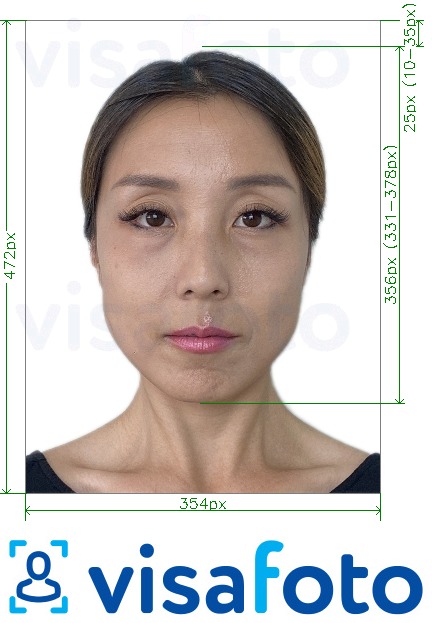
Online China Visa Photo Editor
How can you ensure your China K visa photo meets all the requirements? Due to the specific size and specifications, it is recommended that you use specialised online tools. Visafoto is a trusted service that has been editing document photos since 2013, catering to international standards for passports, visas, driving licenses, and more.
With Visafoto, you can take your China visa application photo from anywhere around the globe. Just take a picture that follows the guidelines and upload it to our platform. We take care of all the details like size, format, and background color so you don't have to worry.
Here’s an example of what you may upload:

You'll receive a digital version suitable for online submissions as well as a print-ready copy. If you're unhappy with the outcome, we'll replace the photo free of charge. Plus, if your photo is rejected by the authorities, we offer a full refund.
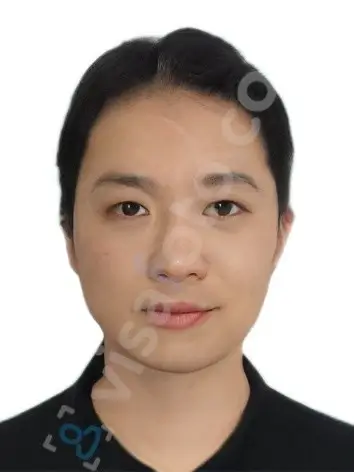
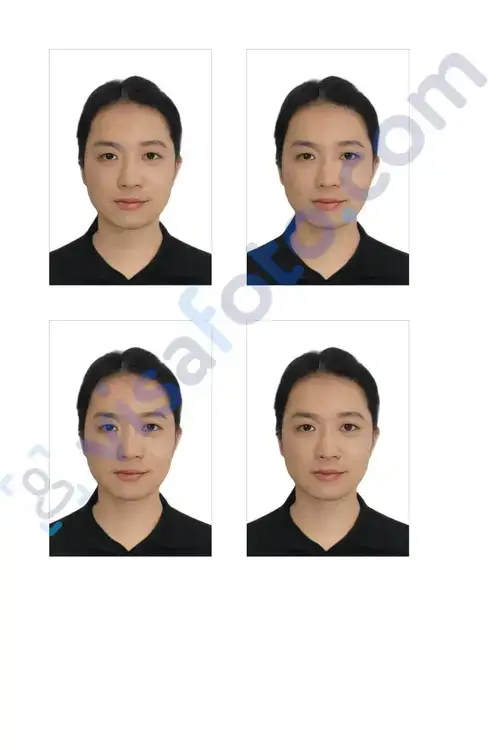
China Visa Photo App
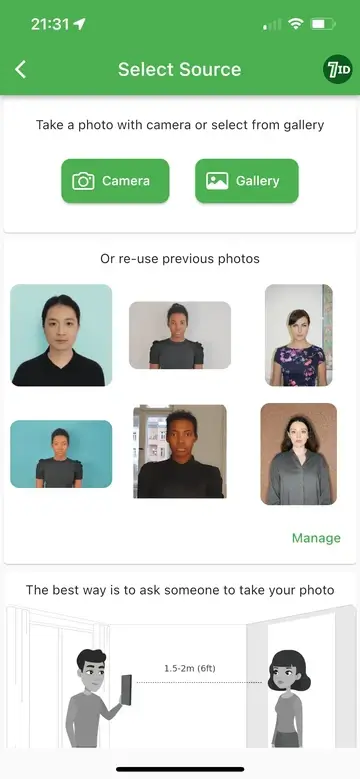
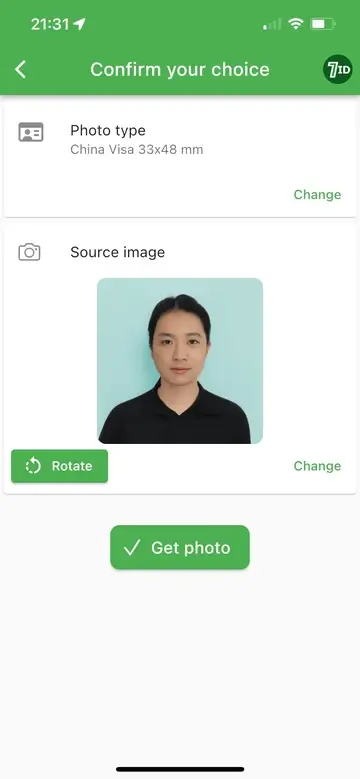
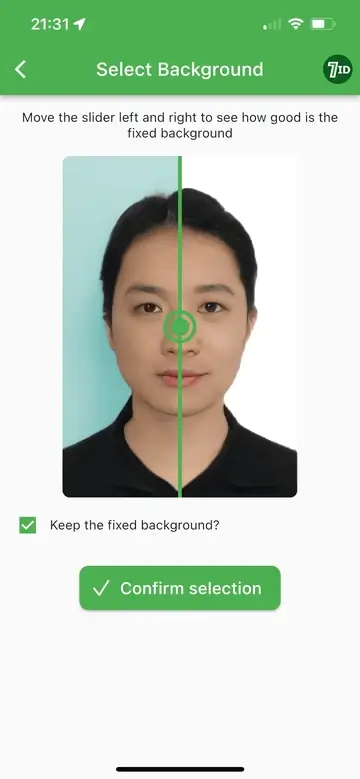
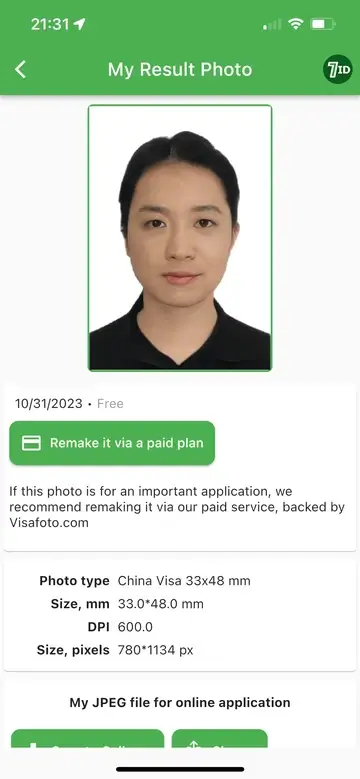
Prefer to use your smartphone? Check out the 7ID app by Visafoto.com. This app uses sophisticated algorithms to optimize your photo for ID, passport, and visa needs. It’s available for both iPhone and Android users, making it accessible to everyone.
Simply upload your photo and select the required document type and country. The app automatically adjusts your photo to fit official guidelines, taking care of size, format, and background color, and ensuring your facial alignment is spot on. You'll get a digital file and a print template that fits standard paper sizes like 4×6, A4, A5, or B5.
For assistance, our support team is available 24/7.
China K visa fees
The fee structure is as follows:
U.S. citizens:
- USD 140, regardless of entry type.
Non-U.S. citizens:
- USD 23 for a single entry.
- USD 34 for two entries.
- USD 45 for multiple entries (valid for six months).
- USD 68 for multiple entries (valid for twelve months).
Expedited processing incurs an additional fee of USD 25 per visa.
China K visa validity and renewal
The China K visa for STEM Talent is typically valid for up to 12 months, allowing for multiple entries during this period.
K visa holders can apply for renewal or an extension before their current visa or authorized stay period expires. It’s likely that you'll need to provide updated evidence of your ongoing involvement in STEM activities, such as current research, teaching, or entrepreneurship, along with refreshed documents like financial proof and medical certificates.
Renewals can be requested through local public security or immigration offices in China, or possibly via Chinese embassies and consulates if you're applying from abroad.
FAQ
Can I apply for a China K visa without a job offer?
Yes, you can. The China K visa is designed for emerging talent in the science and technology fields and does not require a job offer or employer sponsorship. Applicants must meet certain educational and professional criteria, like holding a degree in a STEM discipline or participating in relevant research or academic activities.
Can I work for more than one employer on a K visa?
Yes, according to the new China visa rules, you can work for more than one employer with a China K visa. Unlike traditional work visas, the K visa offers flexibility, allowing foreign professionals in STEM to engage in various approved activities such as multiple jobs, research, teaching, entrepreneurship, and business pursuits.
Can family members join a K visa holder in China?
Family members cannot automatically join a K visa holder on a dependent K visa. Spouses and minor children need to apply separately for family reunion visas, usually Q visas, using the K visa holder as their sponsor. They will need to provide documentation confirming familial ties, such as marriage or birth certificates.
Can I switch to a different visa type while in China on a K visa?
Yes, it's generally possible to switch to another visa type while in China on a K visa. If your situation changes, like obtaining formal employment, you can apply to transition to another visa category, like a work (Z) visa, through the local immigration authorities by following the specified legal processes.
